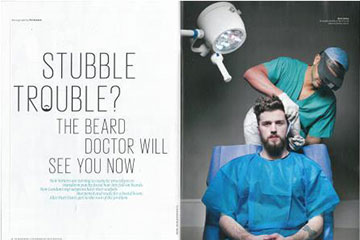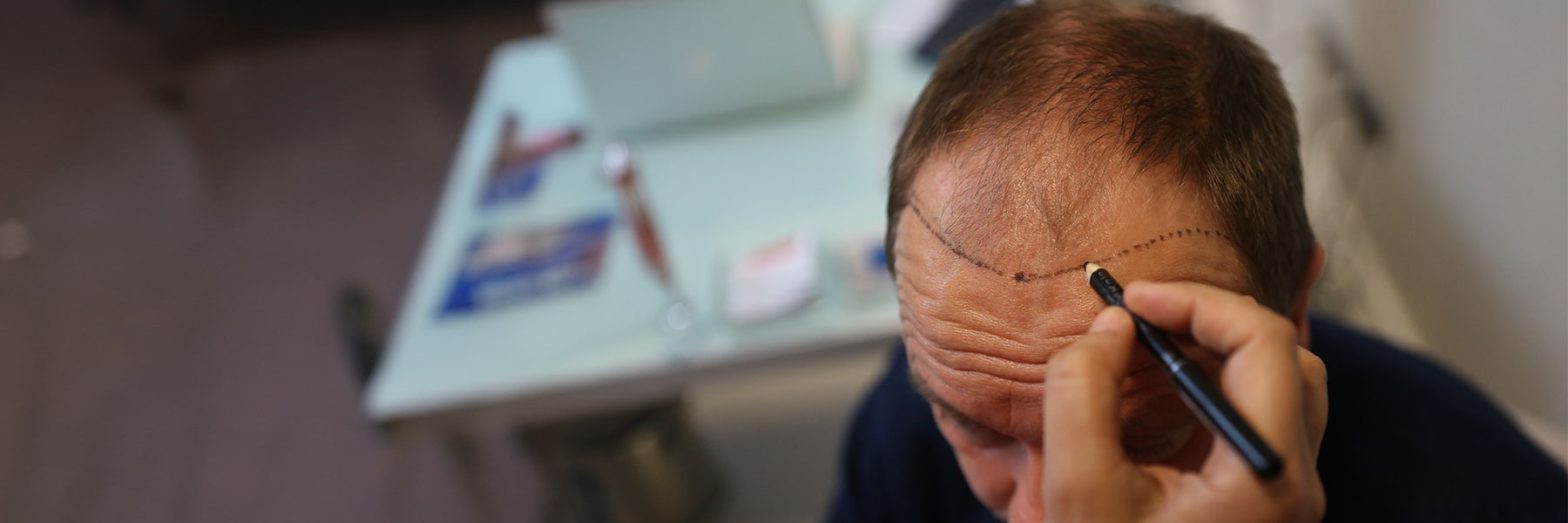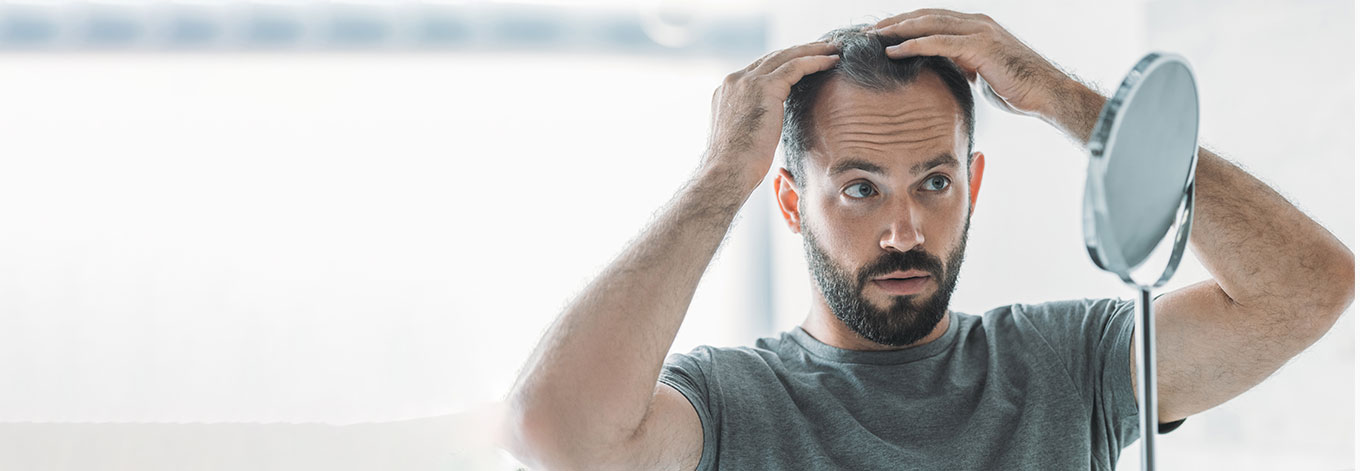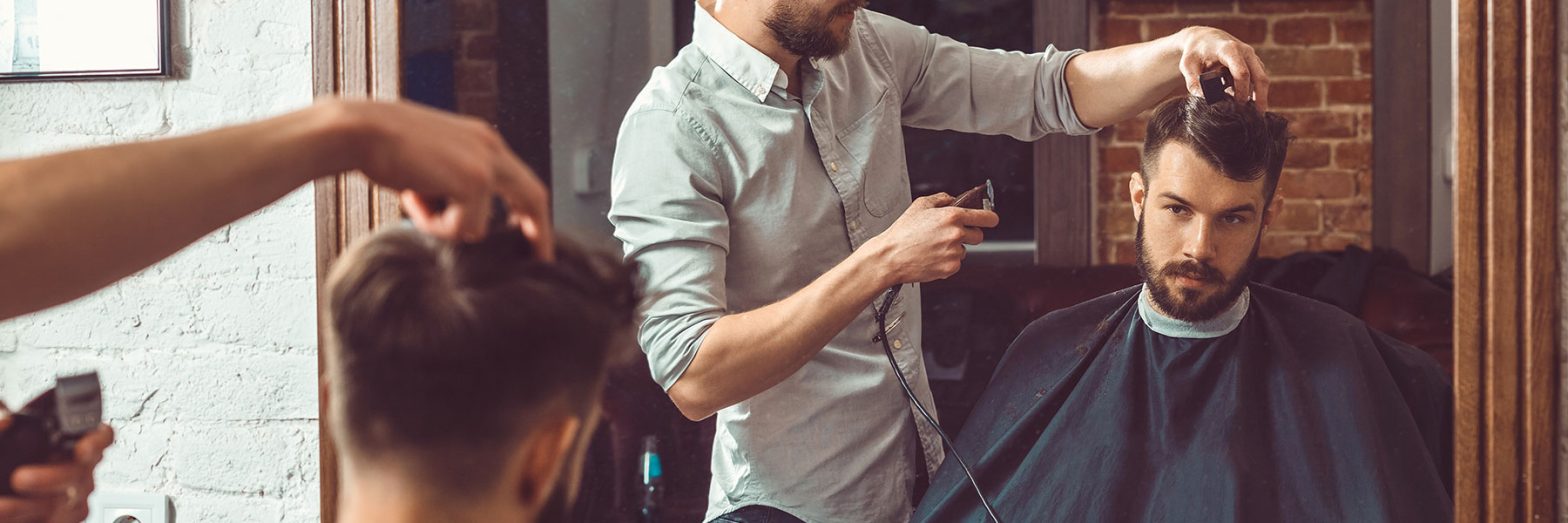
Stubble trouble? Step this way for your Beard Transplant, Sir
HAIR LOSS & HAIR TRANSPLANTS
Evening Standard Magazine
‘Beard transplants aren’t all that new,’ says Dr Greg Williams, who is a member of BAAPS, the British Association of Aesthetic Plastic Surgeons. He is also president of the British Association of Hair Restoration Surgeons and runs the Harley Street clinic for Bessam Farjo, a surgeon who carried out the world’s first full-beard transplant almost two decades ago.
‘I don’t know about beard transplants enhancing masculinity,’ says Dr Williams, ‘but like any cosmetic procedure, they certainly help men feel better about how they are presenting themselves to others, whether it’s for dating or for their work.’
Williams and Reddy find themselves being asked to transplant hairs into sideburns, too, to disguise scars from cosmetic surgery such as facelifts, which can curve their way around in front of the ear. The very thought makes Angelica Kavouni wince. A cosmetic surgeon herself and married to another, she would never leave anyone with such visible reminders of ‘work’; she tucks the incisions from a mid-facelift behind the ear and inside the tragus, the blobby bit in the middle of the front of the ear. She is seeing a growing proportion of men coming for surgical and non-surgical consultations — about 30 per cent of her clientele. ‘Surgery is more acceptable,’ she says, ‘though it is still taboo in that nobody talks about it, particularly not men. What they want are procedures that make them look more awake and more vital.’
That could be a surgical neck-lift, or chin fat removal, done with SmartLipo, a form of laser liposuction that’s good for small areas. ‘What men want is a quick fix without downtime,’ she says. One popular treatment is Liposonix, a type of non-surgical fat-busting that uses blasts of ultrasound energy to shatter fat cells beneath the skin, whose contents then leach out and are eliminated by the body, and which ‘definitely gives circumferential losses’, though it’s reputed to be pretty painful. Another procedure is skin-resurfacing with Fraxel lasers, which freshens up the face by softening wrinkles and getting rid of age spots. It does this by blasting thousands of minute holes in the skin, encouraging it to produce new, fresher, stronger skin cells from below, while the treated skin on the surface — which looks no worse than mild sunburn — flakes off. This is particularly popular with her younger, and often gay, clients who approach the issue of looks-maintenance in the same way as women; while her other main group of male patients, the fifty-plus men, are more concerned about their baggy eyes and sagging necks, so request surgical lifting in those areas. It’s not just CEO types who come to see her either; the men are just as likely to be builders.
According to the latest audit from BAAPS, the number of men having surgical procedures rose by 16 per cent last year. The most popular procedures were for body-shaping, with gynaecomastia (moob-reduction) showing the biggest increase, up by 24 per cent.
‘I am seeing more men, particularly about hair transplants and acne scarring,’ says psychotherapist Norman Wright. ‘They want to look good and they want to change the way they look, but they certainly don’t want to talk about it to each other.’ He runs The Wright Initiative, counselling people who are considering cosmetic treatment in order to give them an opportunity to talk about the implications — for their emotions, their relationships, their psychological welfare — of having a beard transplant, or a nose job, or even just Botox.
Men also feel the pressure to look good from the images of celebrities, or men they see in films, or in the media,’ says Wright. ‘Then there are long-standing issues to do with their looks. They may have been bullied at school because of the way they looked, and have put that aside while they were building a career and perhaps a family. But then if something goes wrong in their relationship or their career, they might start thinking again about those issues that maybe made them feel less attractive, and this could make them decide to change something about themselves, in order to get themselves back in the game.’
Dr Julian De Silva, a cosmetic surgeon working in West London and Harley Street, sees men from all walks of life pitching up in his consulting room. ‘There are two main things that drive men to see me,’ he says. ‘They’re either in their forties, when they see their faces starting to go, or they’re much younger men who come with what you could call genetic issues — eye bags, hooded eyes or a prominent nose. It’s the way they have always been, but they want to change it.’ De Silva does a lot of eyelid surgery (performed under sedation these days rather than general anaesthetic), using a special surgical tissue glue rather than stitches to close the incision. ‘It triggers your natural blood-clotting response,’ he says, ‘so it helps to reduce bleeding, so there is less bruising and faster healing. It’s hard to see that people have had anything done.’ A great many of his male patients come for rhinoplasty — a nose job, in common parlance — and one in five of them, rather shockingly, is there to have a botched job put right.
Over in Devonshire Street, Dr Mica Engel, who works as a cosmetic doctor offering non-surgical treatments at the Waterhouse Young clinic, sees a great many City boys for Botox, mostly into their armpits, so they don’t get giveaway armpit-pizzas of sweat rings when the pressure is on. This, weirdly, is fine to brag about as it’s a medically approved treatment. ‘Increasingly, younger men — say in their late thirties — are booking treatments like Hydrafacials,’ she says. The Hydrafacial is a swift and effective treatment that deep-cleans the skin with a vortex of water, then lifts the contours of the face and packs in a bunch of skin-boosting infusions for good measure — just the sort of thing chaps like. ‘And Cooltech, our non-surgical fat-reduction treatment, is popular, too. The clients here are the sort of men who look after themselves and work out, but they want to get that smooth, honed look that’s hard to achieve with diet and exercise alone, which is why they’re turning to non-surgical procedures — and because they get results.’
 Ben Affleck at the 2013 BAFTAs
Ben Affleck at the 2013 BAFTAs
One doctor with his finger firmly on the pulse of male vanity is Dr Mike Comins (‘Yes,’ he says, ‘I’ve grown a beard, too, but it’s not a transplant’), who runs the Hans Place Practice in Knightsbridge. ‘What I see is that the whole metrosexual thing, that preened and polished look with all that grooming and flawless skin and no visible lines, is on the back-burner,’ he says. ‘Men are really embracing the alpha-male look again, along with the beards. It’s not about loads of Botox any more — if they’re having it, it’s only a bit on the frown lines. It’s more rugged and manly to have a few crow’s-feet and lines on the forehead. They want to look good, but as if they might have done it all by themselves, so they don’t want TOWIE-white teeth and super-smooth foreheads.
‘What’s very important to men is to have good-quality skin — I’m doing a lot of Intracel, which uses radiofrequency energy to boost collagen levels in the skin. It’s really good for acne scars, and also for tightening up slack skin around the cheekbones and jawline.’
He also does masses of Vaser body sculpting, which is less brutal than full-on liposuction but, since it sucks fat right out of the body via a super-slim cannula, is extremely effective. A couple of summers ago, the ‘high-definition’ Vaser look, in which Dr Comins sculpts an instant washboard stomach complete with rippling six-pack, was all the rage, but not any more. ‘Men still love Vaser,’ he says, ‘but they don’t want unrealistic six-packs, just a leaner silhouette. They like to have that V-shape going down to the groin and to get rid of moobs and love-handles and paunches, so it’s all tidy and athletic.’
Next time you meet an alpha male with a bushy beard and perfect six-pack, you may do well to raise an eyebrow and say, ‘I see you know Dr Reddy.’








